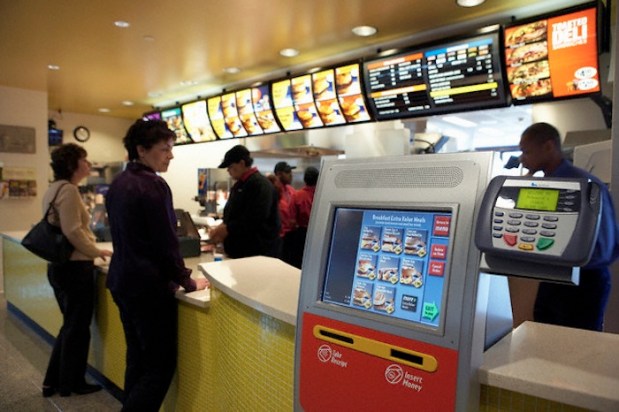The Hacking That Restaurants Like

Everyone has a friend or family member who can turn even the simplest restaurant order into a Herculean ordeal. The person who goes to McDonald’s and orders a Big Mac, only to ask for substitutions for a full half of the components, the cousin who orders every sauce on the side, and so on. In short we all know someone who only sees the menu as a starting point for what they might want to order.
Until very recently, this was dreaded by everyone – servers, dining companions and chefs. But in recent years, public opinion has changed. So much so, that these picky, otherwise high maintenance eaters of yesteryear are now regarded as “menu hackers” and are as likely to be met with enthusiastic cheering as they are to be met with exasperated eye-rolling.
And that mass change of heart is not just affecting customers. The restaurants that serve them are also embracing the menu hack. What once represented a logistical headache for staff that drove large “No Substitution!” notices onto menus nationwide is now shaping up to be a next-gen personalization tool that’s helping mass market restaurants serve up mass produced food that doesn’t feel like mass produced food.
The secret sauce powering the change in opinion is digital ordering technology.
The Most Famous Of Menu Hackers
Anyone who has ever seen the movie “Five Easy Pieces“ pretty much understands the fundamentals of “menu hacking” or “restaurant hacking.” If you haven’t seen the movie, the clip is embedded below.
For those without time to watch the clip, Jack Nicholson wants an omelet with wheat toast. The restaurant doesn’t serve side orders of plain toast. So he orders a plain omelet and a chicken salad sandwich on wheat toast and then requests no chicken, butter, lettuce or mayonnaise on his sandwich.
Ahead of his time, it doesn’t go so well for Jack, the waitress or anyone else having lunch that day.
Today, things go much better for menu hackers, who have formed an extensive Internet subculture. While there are many websites, listicles and social media hotspots for the wonderful world of secret menu items, the Internet’s largest repository #HackTheMenu offers both the largest selection, and the best explanation of the underlying philosophy of the movement.
“Secret Menus at restaurants are comprised of unofficial and unadvertised selections that fast-food chains will make when ordered but that do not exist on their regular menus,” the site explains. “While some secret menu items were created by the restaurants themselves, most of the secret items were invented by customers and passed on by word-of-mouth.”
As it turns out, if one is on the hunt for a Cheeserito from Taco Bell, a Meat Cube from Wendy’s or a Sunrise Slush from Starbucks, they are easily attainable and yours for the asking — as long as you know what to ask for.
Or, even if you don’t. While there are popular “favorite” hacked items, the point of menu hacking is to constantly use the menu one is given to create newer, better and tastier options.
Why Restaurants Should Like Menu Hackers (And Why Digital Makes Them Easier To Love)
The main problem with restaurant hacking is time – especially in QSR restaurants where speedy service is the essential value proposition. Customization, by its nature, just takes longer both on the preparation end and the ordering end, since the person taking it has to do more to mentally process it than normal.
But, those time concerns aside, food merchants have reason to love customization. First off because consumers love it.
“People love to make something uniquely theirs. In the subculture, it’s called hacking the menu. It unlocks the entire Taco Bell kitchen,” noted Tressie Lieberman, vice president of Digital Innovation and On Demand at Taco Bell.
And that love of hacking translates into a revenue stream, as consumers can and will pay for those upgrades. In fact, there is some evidence that when consumers are freed from the prying eyes of a salesperson, they will in fact by more, especially when it comes to food. As it turns out, many shoppers feel free to order both extra cheese and double bacon when ordering from a computer that’s not going to judge them.
And, as a few high-profile digital order rollouts are demonstrating, it may be possible to tap into some of the benefits of menu hacking without causing temporal chaos behind the counter.
About a week ago, Taco Bell expanded its in-app preorder to the Web — and has kept in place its very liberal customization allowance that will help the customer turn their burrito into whatever they want it to be, even if that thing is no longer technically a burrito.
“You can make anything vegetarian or add more meat. You can do extra add-ons like a seven-layer burrito adding on potatoes, bacon. You see a lot of menu discovery,” Lieberman noted.
And that move to customization is paying out for Taco Bell, as demonstrated in their Web app. Consumers weren’t merely moving their in-store behavior online — they were expanding their order. On the whole, the chain has seen a 30 percent growth in order/check size.
And Taco Bell is not alone on the digital customization bandwagon. Starbucks mobile pay ahead went live nationally about two weeks ago — also with a focus on allowing the customer to hack the menu and build their own Starbucks drink.
“You could order everything on the app that you could order in the store. If we run out of something, the app will reflect that. You can customize your order just the way you would in the store,” Starbucks Chief Digital Officer Adam Brotman explained.
Both programs are then attuned to geolocation information about the coming customer so that those orders are made and ready go out the door as soon as they walk in the door.
When it works right, everyone gets what they want. Customers get to feel like they are part of the cool club with their artisanal QSR, merchants sell more to happier consumers and other patrons aren’t suffering through delays when all they want is to buy a bottle of water.
